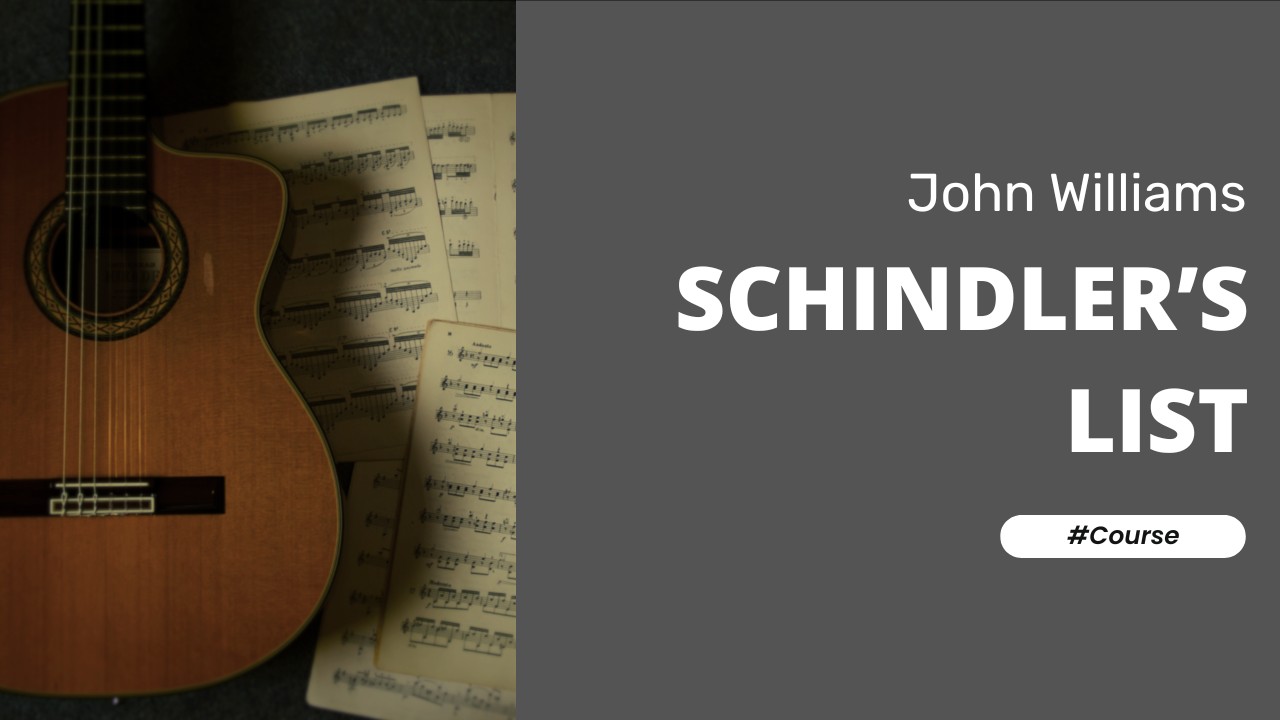Andantino in G major by Ferdinando Carulli
Introduction
This short and sweet study by the Italian guitarist & composer Ferdinando Carulli is a great little etude to get the fingers of the right hand pumping. Carulli was born in Naples way back on the 9th of February 1770 and he passed away in France a week after his 71st birthday on the 17th of February 1841.
“Andantino” by Ferdinando Carulli is a delightful piece that showcases the charm and elegance of early 19th-century classical guitar music. Ferdinando Carulli, an influential Italian composer and virtuoso guitarist, played a crucial role in establishing the guitar as a respected concert instrument. His extensive body of work includes over 400 compositions, ranging from pedagogical studies to intricate concert pieces, each contributing significantly to the classical guitar repertoire.
“Andantino” is a prime example of Carulli’s ability to blend simplicity with musical sophistication. This piece, with its gentle tempo and graceful melody, reflects the stylistic nuances of the Classical era. It emphasizes clarity, balance, and lyrical expression, making it an excellent study for guitarists aiming to develop their phrasing and dynamic control.
When performed on the classical guitar, “Andantino” allows the guitarist to explore the instrument’s lyrical qualities and expressive potential. The piece’s straightforward structure and melodic charm make it accessible to players transitioning from beginner to intermediate proficiency, while still offering depth for more advanced musicians to interpret and express.
Playing “Andantino” requires a sensitive touch and an understanding of classical stylistic conventions. The guitarist must pay attention to articulation, dynamics, and phrasing to convey the piece’s elegant simplicity and musical grace. Through this composition, Carulli’s contribution to the classical guitar canon continues to inspire and educate, highlighting the timeless appeal of his music.
Tips:
-
Concentrate on planting m & P at the same time for bars 1 -4
-
Bars 9, 11, 13, and 14 use full planting
-
Bar 10 accent the melodic notes
Musical Style
Ferdinando Carulli’s musical style is a hallmark of the Classical era, characterised by clarity, balance, and elegance. As one of the pioneering figures in classical guitar music, Carulli’s compositions often feature singable melodies, straightforward harmonic progressions, and a refined sense of form. His works are particularly notable for their pedagogical value, designed to develop technical skills and musical expression in guitarists. Carulli’s use of arpeggios, scales, and varied dynamics within his pieces reflects his intent to showcase the guitar’s capabilities while making the music accessible to a wide range of players. His contributions to guitar literature have left a lasting legacy, influencing generations of guitarists and composers.
Notable Pieces
Five notable pieces by Ferdinando Carulli:
• Method for the Guitar, Op. 27
• Duo in G Major, Op. 34
• Petit Concerto in D Major, Op. 140
• Six Andantes, Op. 320
• Serenade in A Major, Op. 96
Let your fingers fly!
Josh
About this Course
Introduction
This short and sweet study by the Italian guitarist & composer Ferdinando Carulli is a great little etude to get the fingers of the right hand pumping. Carulli was born in Naples way back on the 9th of February 1770 and he passed away in France a week after his 71st birthday on the 17th of February 1841.
“Andantino” by Ferdinando Carulli is a delightful piece that showcases the charm and elegance of early 19th-century classical guitar music. Ferdinando Carulli, an influential Italian composer and virtuoso guitarist, played a crucial role in establishing the guitar as a respected concert instrument. His extensive body of work includes over 400 compositions, ranging from pedagogical studies to intricate concert pieces, each contributing significantly to the classical guitar repertoire.
“Andantino” is a prime example of Carulli’s ability to blend simplicity with musical sophistication. This piece, with its gentle tempo and graceful melody, reflects the stylistic nuances of the Classical era. It emphasizes clarity, balance, and lyrical expression, making it an excellent study for guitarists aiming to develop their phrasing and dynamic control.
When performed on the classical guitar, “Andantino” allows the guitarist to explore the instrument’s lyrical qualities and expressive potential. The piece’s straightforward structure and melodic charm make it accessible to players transitioning from beginner to intermediate proficiency, while still offering depth for more advanced musicians to interpret and express.
Playing “Andantino” requires a sensitive touch and an understanding of classical stylistic conventions. The guitarist must pay attention to articulation, dynamics, and phrasing to convey the piece’s elegant simplicity and musical grace. Through this composition, Carulli’s contribution to the classical guitar canon continues to inspire and educate, highlighting the timeless appeal of his music.
Tips:
-
Concentrate on planting m & P at the same time for bars 1 -4
-
Bars 9, 11, 13, and 14 use full planting
-
Bar 10 accent the melodic notes
Musical Style
Ferdinando Carulli’s musical style is a hallmark of the Classical era, characterised by clarity, balance, and elegance. As one of the pioneering figures in classical guitar music, Carulli’s compositions often feature singable melodies, straightforward harmonic progressions, and a refined sense of form. His works are particularly notable for their pedagogical value, designed to develop technical skills and musical expression in guitarists. Carulli’s use of arpeggios, scales, and varied dynamics within his pieces reflects his intent to showcase the guitar’s capabilities while making the music accessible to a wide range of players. His contributions to guitar literature have left a lasting legacy, influencing generations of guitarists and composers.
Notable Pieces
Five notable pieces by Ferdinando Carulli:
• Method for the Guitar, Op. 27
• Duo in G Major, Op. 34
• Petit Concerto in D Major, Op. 140
• Six Andantes, Op. 320
• Serenade in A Major, Op. 96
Let your fingers fly!
Josh




